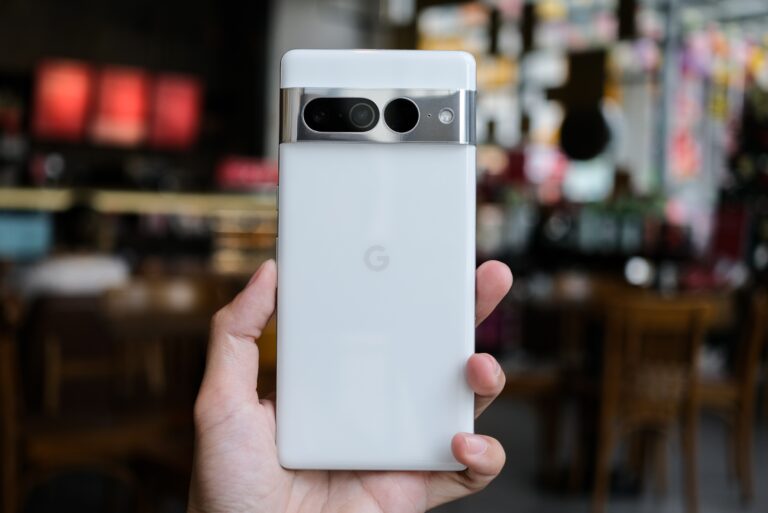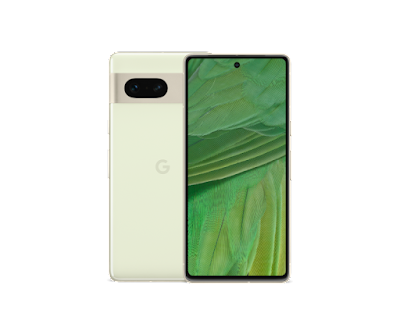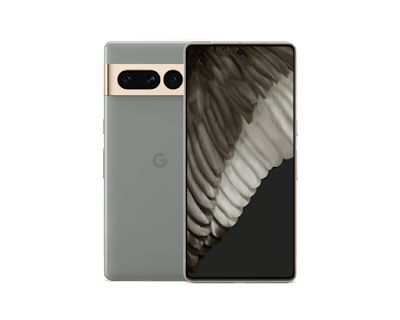

Google Pixel 7
$599
A strong contender in the mid-range price bracket, the Pixel 7 offers most of the features of its flagship counterpart for a fraction of the price.

Google Pixel 7 Pro
$899
The Pixel 7 Pro takes what makes the Pixel 7 great — like the Tensor G2 chip — and iterates on top of it by adding features like a telephoto camera and 6.7 inch 120Hz AMOLED display.
Note: When you purchase a product though the above links, we may earn a affiliate commission.
The word “ecosystem” evokes thoughts of one company: Apple. Apple has refined its ecosystem over the last 15 years into what it is today, an amalgamation of different products refined into a system so cohesive you might forget it’s even there – but Apple isn’t the only option. Google created one of the most successful productivity suites in Google Workspace, but their Pixel line hasn’t seen similar success. Google’s Pixel line hasn’t found nearly the same consumer adoption in North America as Samsung or Apple. Their products struggle to differentiate themselves from competitors, but the Pixel 7 and 7 Pro look to change that.
Apple’s ecosystem wasn’t an accident. Apple controls the software on all of their products, so they can funnel you to their walled garden. After all, if your primary computer is a Mac, you wouldn’t want to miss out on features like iMessage, FaceTime, and Apple Pay by using anything other than an iPhone. iMessage is the default texting app for over half of all smartphones in North America. It offers a streamlined experience, allowing you to access the same text messages across your iPhone, iPad, and Mac. Convenience isn’t the only factor; Apple also makes it difficult to leave iMessage by requiring you to unlink your number from iMessage or miss texts on your new Android phone from iPhone users. Apple’s cross-platform services also lack support compared to their Mac and iPhone counterparts. Apple’s recent announcement that Apple Music and Apple TV+ will come to the Windows Store in 2023 will mean that it took 8 and 5 years, respectively, for Apple to deem Windows as worthy of their multimedia services. Apple Music subscribers on Windows are stuck on iTunes despite Apple having abandoned the program, and Apple TV+ is limited to a web interface. These services demonstrate Apple’s reluctance to allow their software on other platforms. The same argument can be made about Apple’s credit card, Apple Card. It requires Apple Pay, and refuses to let you add it to competing mobile wallets. Apple’s ecosystem funnels you into using their products and has yet to be imitated.
Of course, Apple’s ecosystem only works since they have solid market share, another area where Google struggles. While Apple is synonymous with the iPhone, Google’s hardware is not synonymous with Android. According to analysis done by Canalys, Google held 2% of the smartphone market in North America while Samsung had 26% and Apple had 52% in Q2 2022. That dominant market share has allowed Apple to get away with extreme platform lock-in. Samsung is also guilty of this, albeit to a lesser degree. While their products are inherently more open due to Android’s ubiquity, Samsung locks certain features behind the Galaxy brand. The recently released Galaxy Buds2 Pro lock 24-bit hi-fi audio and virtual surround sound to Galaxy phones running Android 8 or newer. The Galaxy Watch 4 also locks some of it’s health features, namely ECG and blood pressure monitoring, to Galaxy phones. Pixel’s accessories feature no such lock-in. Continuing down this pro-consumer route will help Google’s long-term attempts at platform maturity.
That maturity will only happen if Google can make their hardware synonymous with Android. Currently, Samsung fills that role, largely resulting from Google’s past efforts in the industry. Prior to the Pixel, Google never directly made their own phones. Pixel’s predecessor, Nexus, was produced by 5 different OEMs targeting a range of price categories. This meant that Google was never able to solidify Nexus’ product identity. Additionally, from June 2013 – March 2014 Google also enlisted OEMs to create the “Google Play Editions” running stock Android. By the time the original Pixel launched in 2016, Samsung had positioned themselves as Android’s iPhone competitor. The Pixel 6 and 6 Pro were the first Google phones to achieve mainstream appeal, beginning a long road to reclaim Samsung’s mobile market share. The Pixel 7 and 7 Pro now aim to continue where the 6 and 6 Pro left off in Google’s quest to become a serious market contender.
Fortunately, the Pixel 7 is Google’s strongest pro-ecosystem argument yet. After the Pixel 6 unified Pixel’s hardware and software Google became free to approach the Pixel similarly to how Apple approaches the iPhone. To attract users of other Android ecosystems, Google started implementing unique features in the Pixel like Photo Unblur and Magic Eraser, the latter of which can remove objects out of pictures with AI. Further indicative of Google’s focus on turning Pixel into an ecosystem are the recent rumors that the Pixel Tablet will have a stand that mimics a Nest Hub, integrating Google’s smart home devices with Pixel. They’re also expanding into new categories in the mobile accessory space with the Pixel Watch, a wearable competitive with Apple and Samsung. Google wants your focus point to be a Pixel, and they want your Pixel to be the place where you manage your smart home, play your media, and check the time.
The Pixel 7 and 7 Pro drastically undercut the phones they compete against at $599 and $899 respectively. In this market, those numbers matter. After Apple normalized the $1,000 phone with the iPhone X in 2017, other companies soon followed suit. The Pixel 7 Pro’s main competitors, the Samsung Galaxy S22 Ultra and iPhone 14 Pro Max, both start at over $1,000. Ironically, the S22 Ultra is the most expensive phone out of them all with a starting price of $1,200 before tax when purchased directly from Samsung. When compared to their direct competitors, the Pixel 7 and 7 Pro are 19-25% cheaper. Google has done a great job positioning the Pixel as a value phone, with full ecosystem support, that can effectively compete with the best the industry has to offer for hundreds of dollars less.
Google’s Pixel lineup hasn’t had much success in the mobile market, and their attempts to break through have largely gone unrecognized. The Pixel 6 and 6 Pro were different, as they laid the groundwork for the 7 and 7 Pro to become serious contenders in the mobile market. The Pixel ecosystem is maturing with strong mobile accessories competitive with Apple and Samsung, and the Pixel Tablet will allow Google to integrate their smart home equipment to the Pixel experience. Today, the Pixel 7 leads the market in AI processing with Magic Eraser and Photo Unblur. Google wants you to know they’ve arrived, and they’re making a statement: It’s time to pay attention to the Pixel 7.


